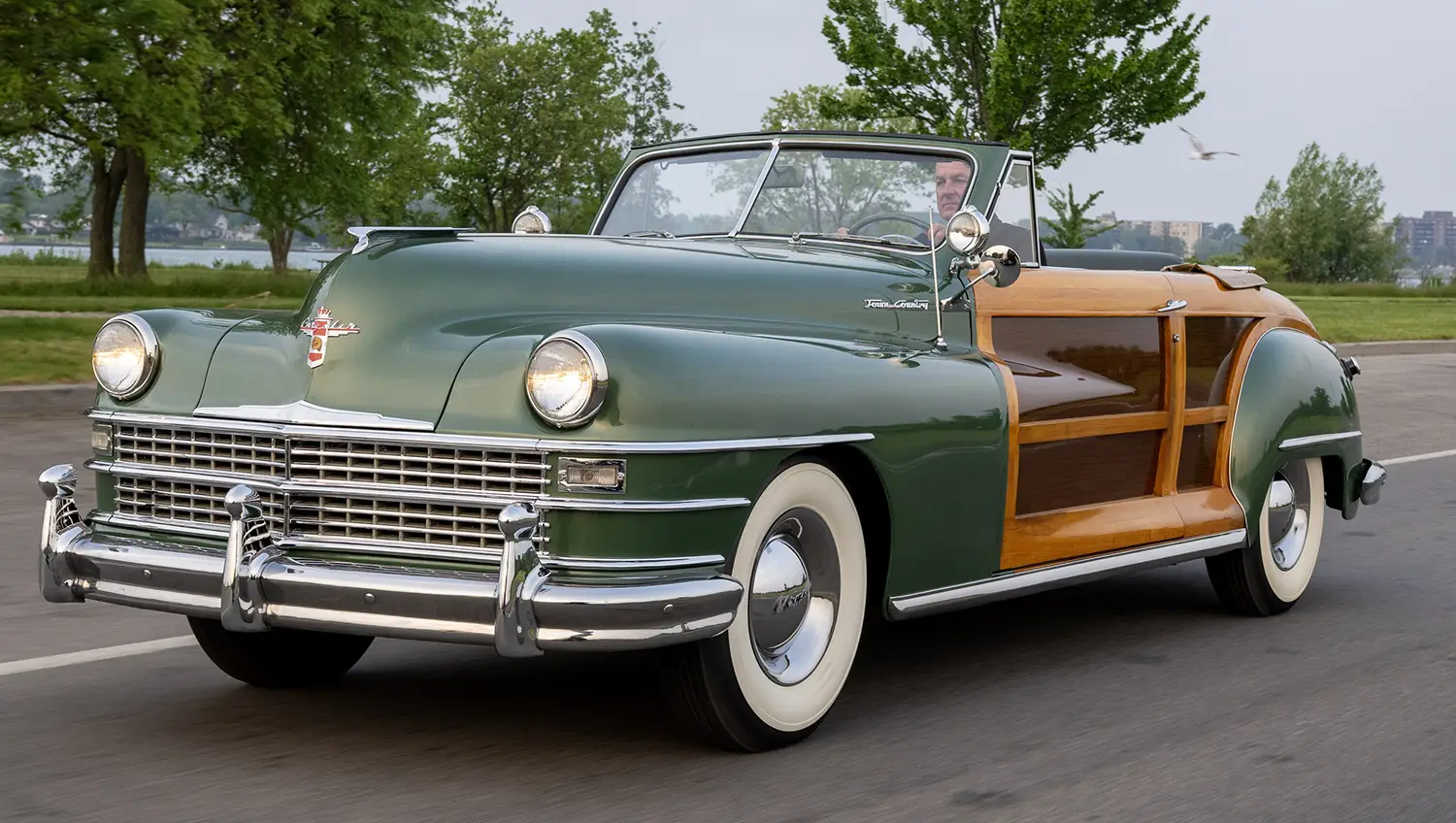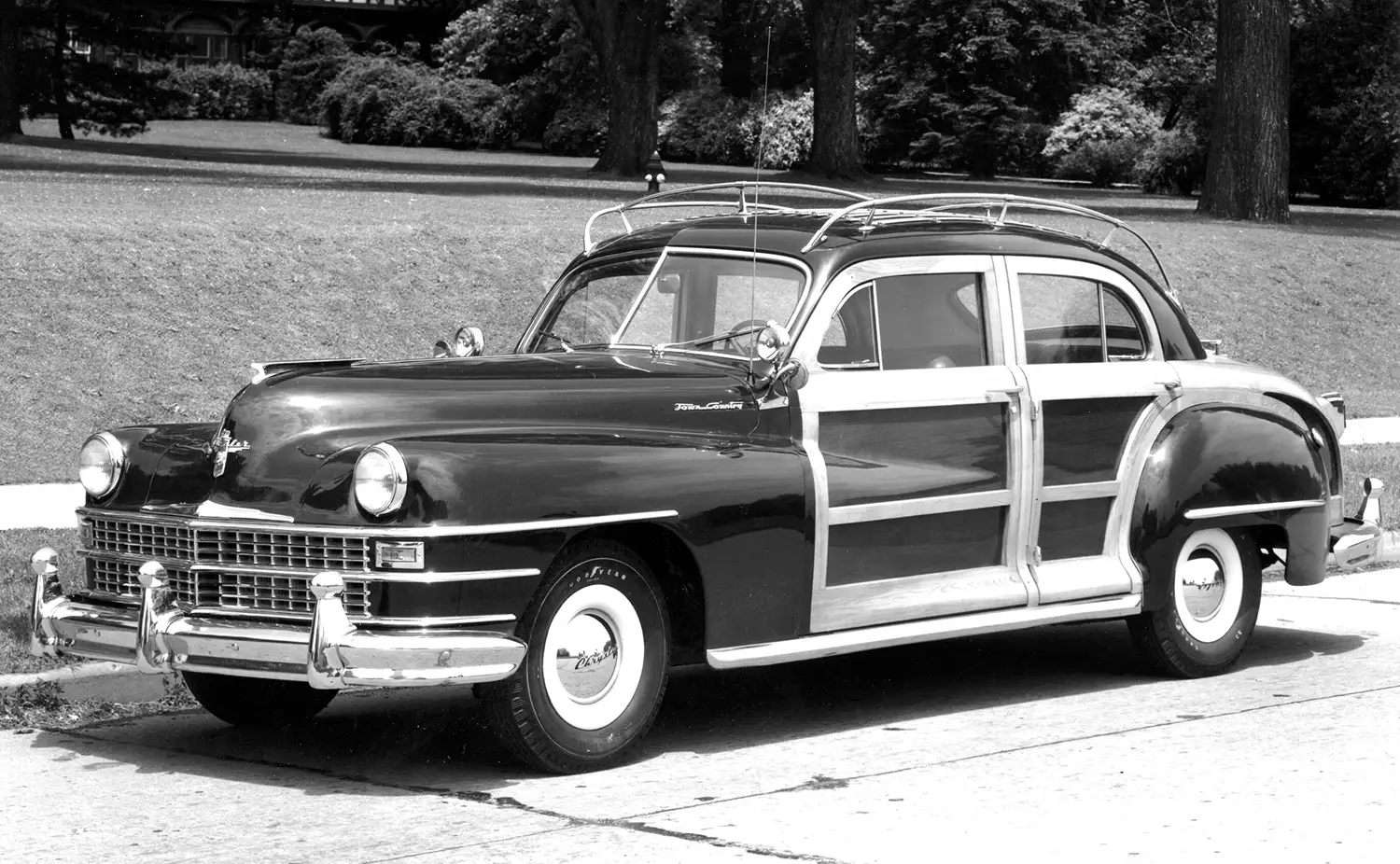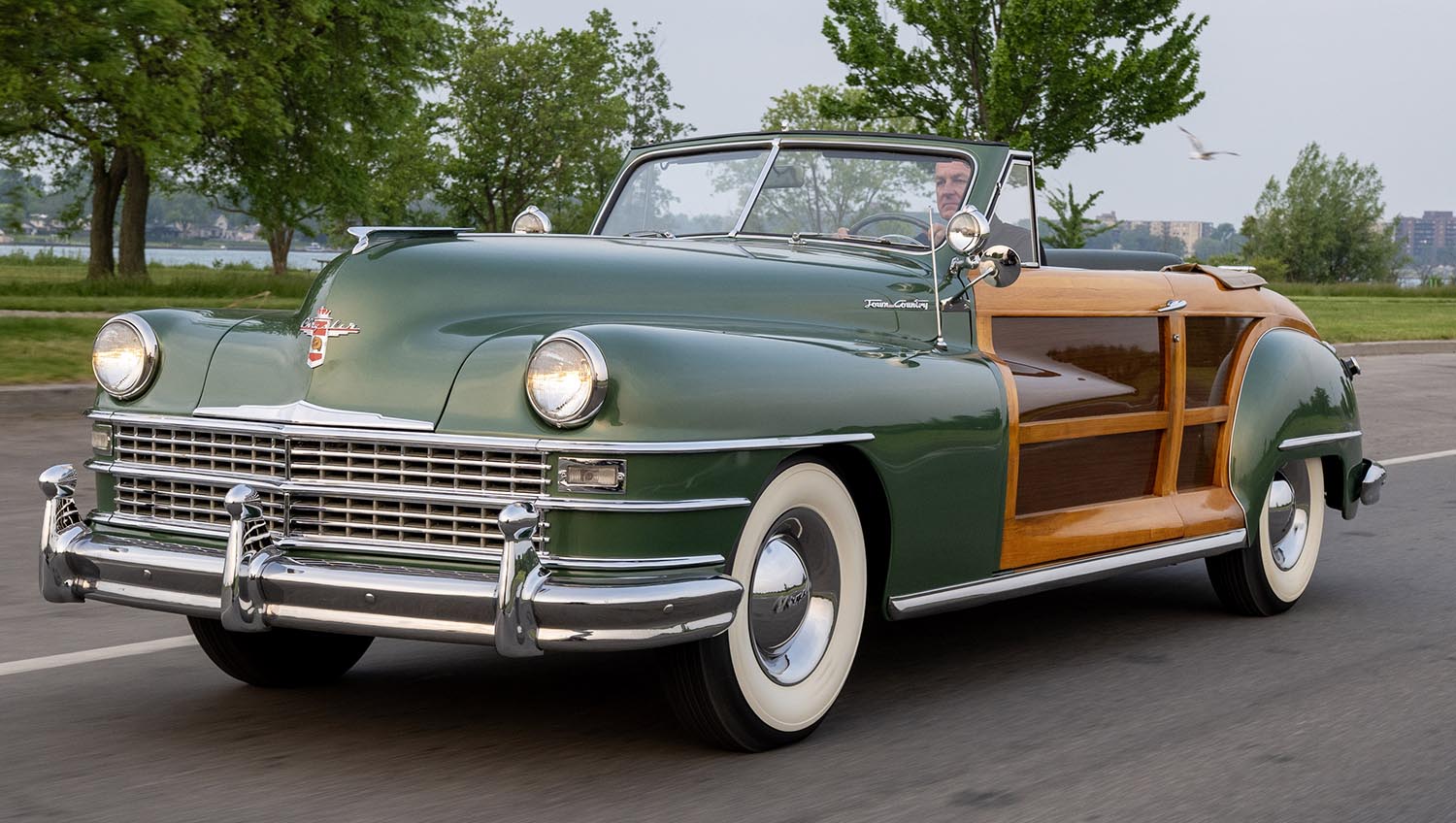
Take a look at the 1948 Chrysler Town & Country and you immediately understand its impact. This car is not a station wagon; it is a meticulously crafted luxury statement. It represents a bold and truly unique period in automotive design history. Chrysler dared to merge the new world of post-war steel bodies with the disappearing craft of coach-built wood construction. The resulting “Woody” captivated a wealthy and style-conscious clientele. Consequently, this model cemented a legacy that few other American cars could ever match.
The Post-War Design Dilemma
Following World War II, American automakers faced a significant challenge. They needed to restart production quickly, using chassis designs largely carried over from 1942. Designers struggled to make these pre-war platforms look and feel excitingly new. Chrysler’s brilliant solution was to wrap its flagship New Yorker platform in something absolutely spectacular. This approach resulted in the production of the breathtaking 1948 Chrysler Town & Country.
A Blend of Tradition and Modernity
The car’s name perfectly described its dual nature. It featured the solid, sophisticated steel front end of a “Town” car. This merged seamlessly into the genuine wood-paneled rear section, evoking the relaxed “Country” estate feel. The look was striking, blending the familiar smooth lines with an almost nautical level of craftsmanship. The combination was bold, elegant, and instantly recognizable on any boulevard.
The Artistry of Hand-Finished Wood
What truly sets the 1948 Chrysler Town & Country apart is its extensive use of real wood. This was not a decal or a trim piece; it was structural and decorative. The framework utilized white ash, carefully shaped to fit the steel body panels. Honduran mahogany veneer filled the large sections between the ash framing.
The Bespoke Nature of Each Model
Skilled craftsmen completed this complicated woodwork by hand, making each vehicle virtually unique. The level of meticulous care required in the construction was intensive. Owners even received special instructions to routinely varnish the wood. Maintaining this real wood was a commitment, but it reinforced the car’s bespoke, high-end status. This process drove the cost dramatically higher than its all-steel contemporaries.
Luxury and Comfort: The Flagship Interior
Inside, the Town & Country maintained its flagship status by offering true opulence. The cabin was a study in materials, often upholstered in rich leather. Plaid Broadmoor cord inserts sometimes accented the seating surfaces. This gave the interior a distinctly warm, tailored, and luxurious feel.
Advanced Features for the Discerning Driver
The dashboard and door panels often featured polished wood to complement the exterior aesthetic. This careful detailing created a truly cohesive design statement. The car offered advanced features for the era, including a heater, defroster, and an innovative push-button AM radio. Passengers were enveloped in comfort, ensuring a serene ride, regardless of the destination.
Unpacking the Unique Drivetrain Technology
The mechanical package of the 1948 Chrysler Town & Country reflected Chrysler’s engineering leadership. It was built for smooth, powerful cruising, not just for its looks. This machine was equipped with a robust engine providing ample power for its size. The engine was paired with a unique transmission that simplified the driving experience considerably.
Power, Torque, and Smooth Operation
Many convertible models featured the robust 323.5 cubic inch L-head inline eight-cylinder engine. This magnificent straight-eight produced a solid 135 horsepower at 3,400 rpm. The power was routed through Chrysler’s famous Fluid Drive transmission. This unique semi-automatic system employed a fluid coupling instead of a solid flywheel. This provided a remarkably smooth, lurch-free takeoff. Drivers only needed to manage the clutch for initial starting and shifting between gear ranges. This system was a significant step toward the truly automatic transmission. The car’s independent front coil spring suspension further ensured a comfortable and composed ride quality.
A Rarity for Collectors and Enthusiasts
The high cost and labor-intensive production ensured that the Town & Country was always an exclusive vehicle. Chrysler produced only a small number of these wood-bodied cars between 1946 and 1949. Today, survivors are exceedingly rare and treasured by collectors worldwide. This machine represents a moment when traditional handcraftsmanship briefly held its ground against mass-production steel. This era of ‘Woodies’ quickly faded, but the 1948 Chrysler Town & Country remains the undisputed king of that sophisticated, timber-framed era.
Disclaimer: Content on this site is for informational purposes only. Vehicle specs, pricing, and availability may change. Always verify details with official sources before making decisions. Opinions are those of the authors.
Source: Stellantis

